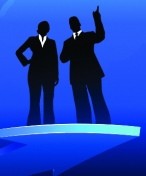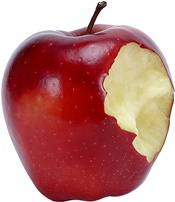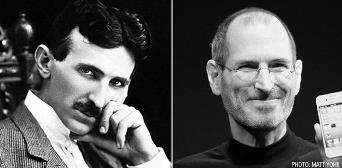
Rolex, The Walt Disney Company and Google top Reputation Institute’s 2016 Global RepTrak 100, the world’s largest annual survey of corporate reputations. The RepTrak System measures the general public’s perception of the world’s top companies on the seven key rational dimensions of reputation: products and services, innovation, workplace, governance, citizenship, leadership and performance.
An “excellent” reputation is represented by an overall RepTrak Pulse score of 80 or higher. A RepTrak Pulse score of 70-79 is considered “strong,” while 60-69 is “average.” None of the companies in the Top 100 scored below 67.
“The Global RepTrak 100 shows that to be a winner in the global market, companies need to deliver on all seven dimensions of reputation,” said Kasper Ulf Nielsen, executive partner at Reputation Institute, in a news release. “The top three companies all demonstrated strong or excellent scores in each dimension, which means that consumers are more likely to buy and recommend their products and services.”
One notable absence from the RepTrak 100 is German automaker Volkswagen, whose reputation dropped by 13.7 points globally in the wake of an emissions scandal. VW earned a strong RepTrak Pulse score of 75 in 2015, good enough for 14th place on the Global RepTrak 100 that year, but dropped to an average RepTrak Pulse score of 61.3 in 2016, falling to 123rd position.
Across the seven dimensions of reputation, VW saw an average drop of 10.9 points, with the biggest drops in governance, citizenship and leadership. VW also saw a drop across all supportive behaviors, which underscores the impact of a company’s reputation on the business.
The top 10 companies in this year’s rankings are:
- Rolex
- The Walt Disney Company
- BMW Group
- Daimler
- LEGO Group
- Microsoft
- Canon
- Sony
- Apple
Consumers identified Rolex as the global leader in products and services, while Apple remains the global leader in innovation and leadership. Google earned top marks on performance and workplace, with The Walt Disney Company perceived as best in citizenship and governance.
Out of the 100 companies that made the list, only six companies managed to make their way into the top 10 across the majority of the markets. Rolex, which occupied the fourth spot in 2014 and 2015 but jumped to first place overall in 2016, ranks in the top 10 across 11 markets – the most out of all companies.
Microsoft returned to the top 10 in 2016 after a one-year absence, replacing Intel, which slipped to 11th place. Though it remains in the top 10, Apple slid from 7th place since 2014.
Download the complete list of Top 100 Reputable Companies.

 It’s time.
It’s time. Step into my room at home and you’ll find a row of book-lined shelves, stacked atop one another and overflowing onto my desk. When I was younger, summers meant days filled with devouring books. And yes, I was that kid who brought books to school and read whenever a spare moment presented itself, only occasionally hiding them beneath my teacher’s line of sight so I could read during class (but only if it was a book I absolutely couldn’t put down).
Step into my room at home and you’ll find a row of book-lined shelves, stacked atop one another and overflowing onto my desk. When I was younger, summers meant days filled with devouring books. And yes, I was that kid who brought books to school and read whenever a spare moment presented itself, only occasionally hiding them beneath my teacher’s line of sight so I could read during class (but only if it was a book I absolutely couldn’t put down). Following Steve Jobs’ recent death, the debate was sparked soon after about his rank among inventors in American lore.
Following Steve Jobs’ recent death, the debate was sparked soon after about his rank among inventors in American lore.  A typical person could name myriad things in life that would be worse than losing one’s iPad: Being forced to watch those super sad Sarah McLachlan abused animal commercials on a continuous loop. Dying in a fiery car crash. Being a chair in Clint Eastwood’s home, constantly having to deflect his criticism.
A typical person could name myriad things in life that would be worse than losing one’s iPad: Being forced to watch those super sad Sarah McLachlan abused animal commercials on a continuous loop. Dying in a fiery car crash. Being a chair in Clint Eastwood’s home, constantly having to deflect his criticism. The focus of a recent eMarketer article was on how more Americans are using their tablets to enhance their shopping experience. Most retailers, it noted, are falling short of providing consumers with the interactive aspects they are looking for.
The focus of a recent eMarketer article was on how more Americans are using their tablets to enhance their shopping experience. Most retailers, it noted, are falling short of providing consumers with the interactive aspects they are looking for. Indiana’s colleges and universities are constantly serving as hubs of innovation and pride for the state. Here’s a great story from the University of Evansville, as computer science major Jesse Squires’
Indiana’s colleges and universities are constantly serving as hubs of innovation and pride for the state. Here’s a great story from the University of Evansville, as computer science major Jesse Squires’  Global workplace productivity is expected to suffer over the next month as the 2010 World Cup soccer tournament takes center stage. The U.S. impact won’t be as substantial. Despite the continued growth in youth soccer (my son wanted to take a personal day from camp to watch the South Africa-Mexico opener on Friday morning), the world’s most popular game has not attracted the same fanatical support here at home.
Global workplace productivity is expected to suffer over the next month as the 2010 World Cup soccer tournament takes center stage. The U.S. impact won’t be as substantial. Despite the continued growth in youth soccer (my son wanted to take a personal day from camp to watch the South Africa-Mexico opener on Friday morning), the world’s most popular game has not attracted the same fanatical support here at home.